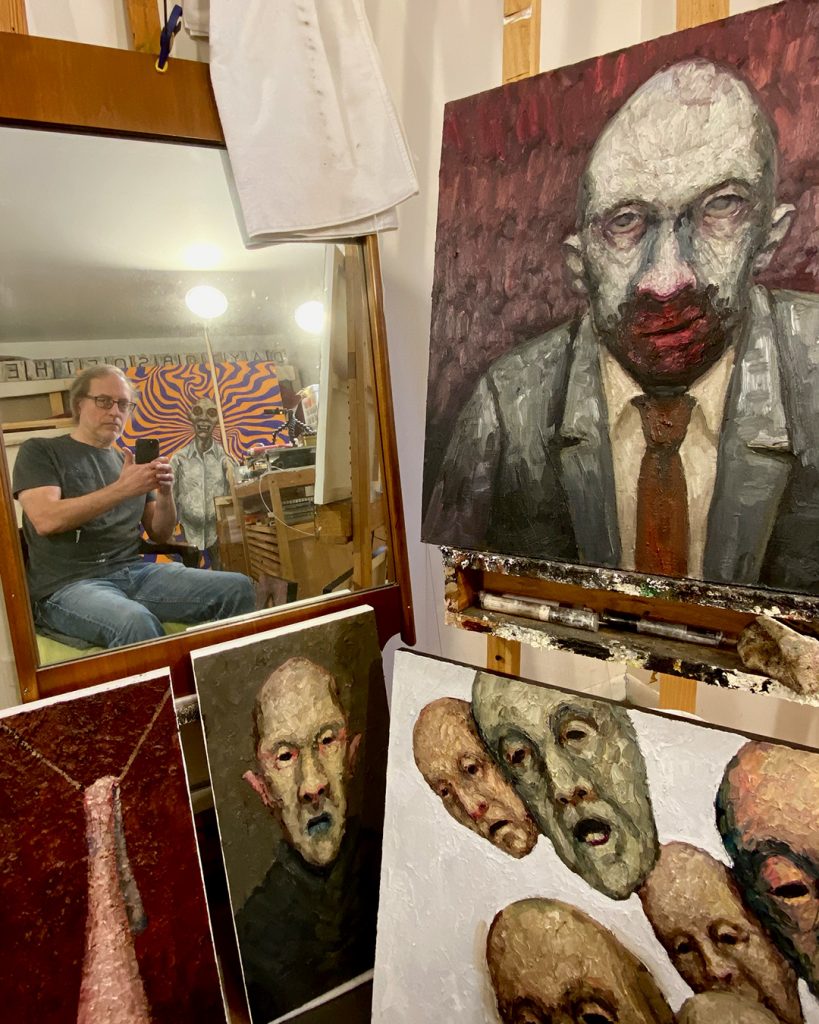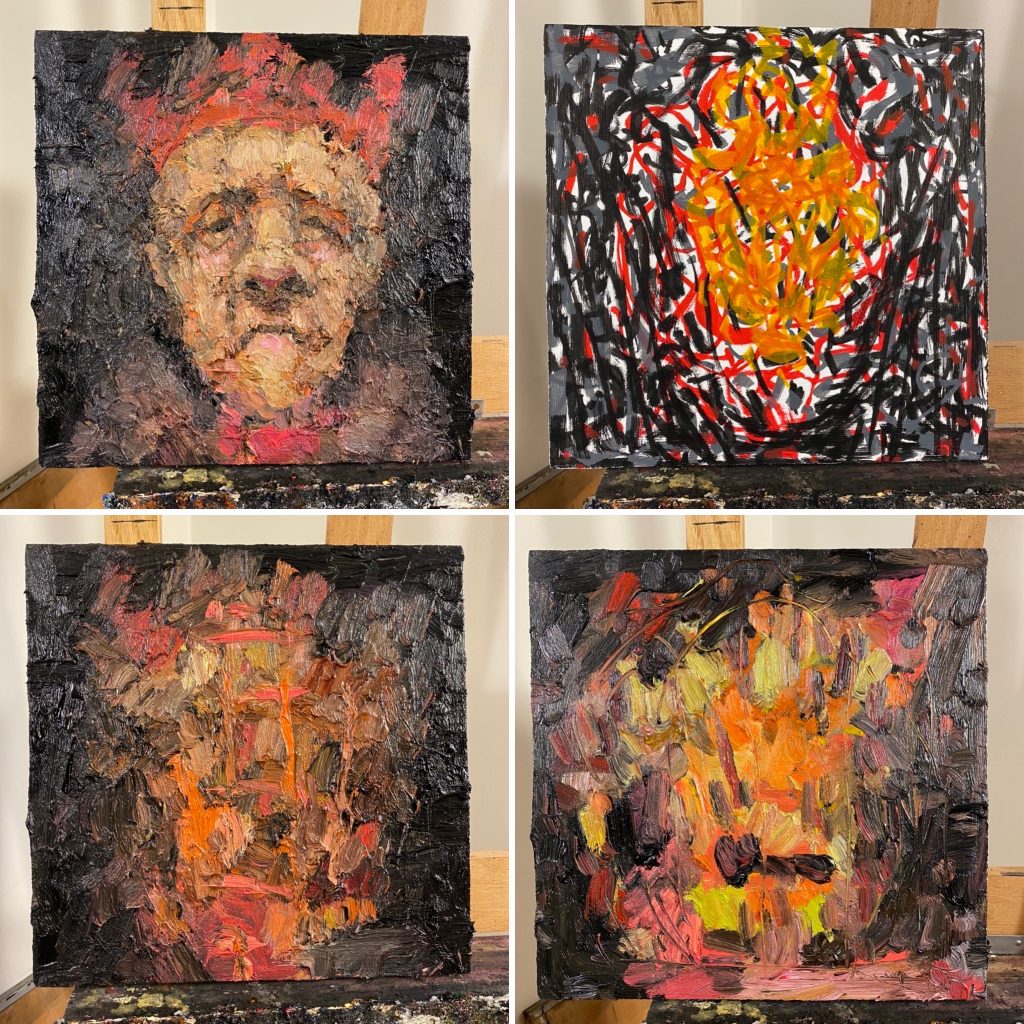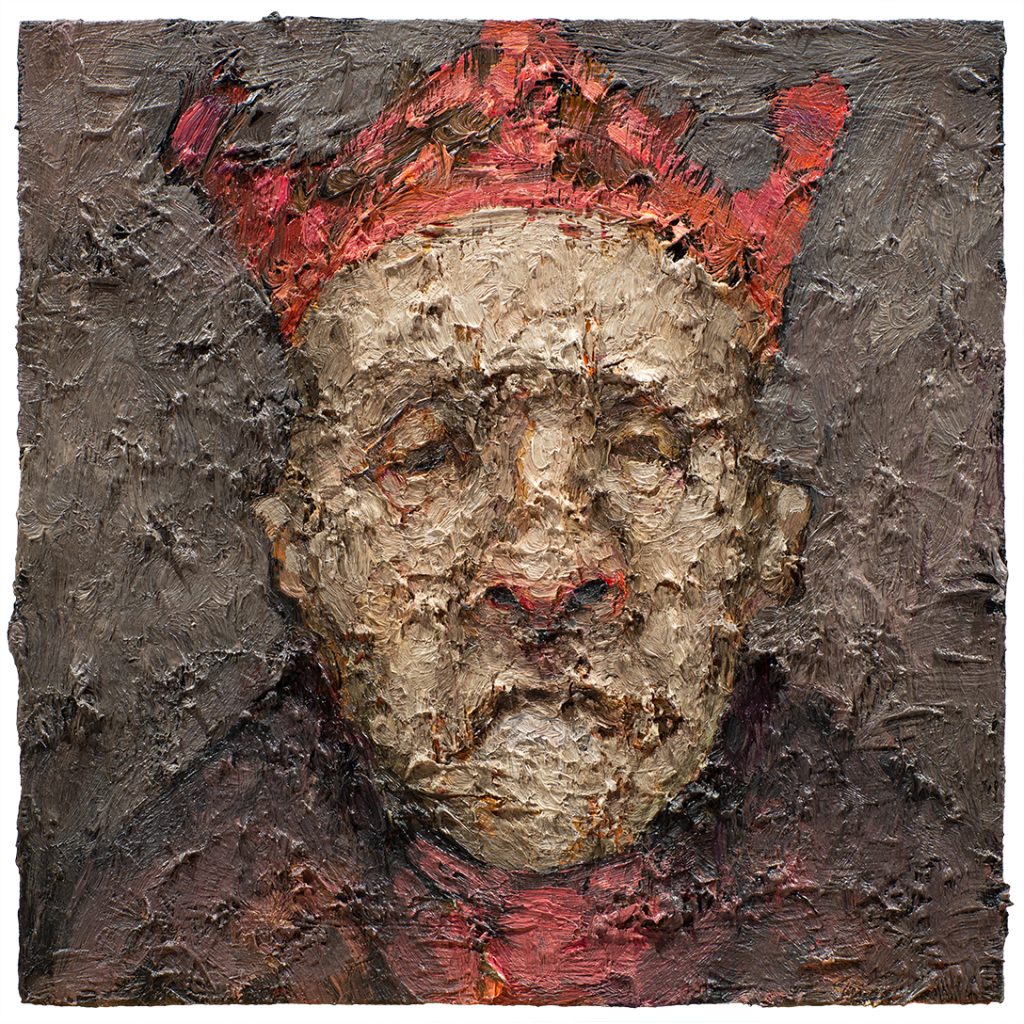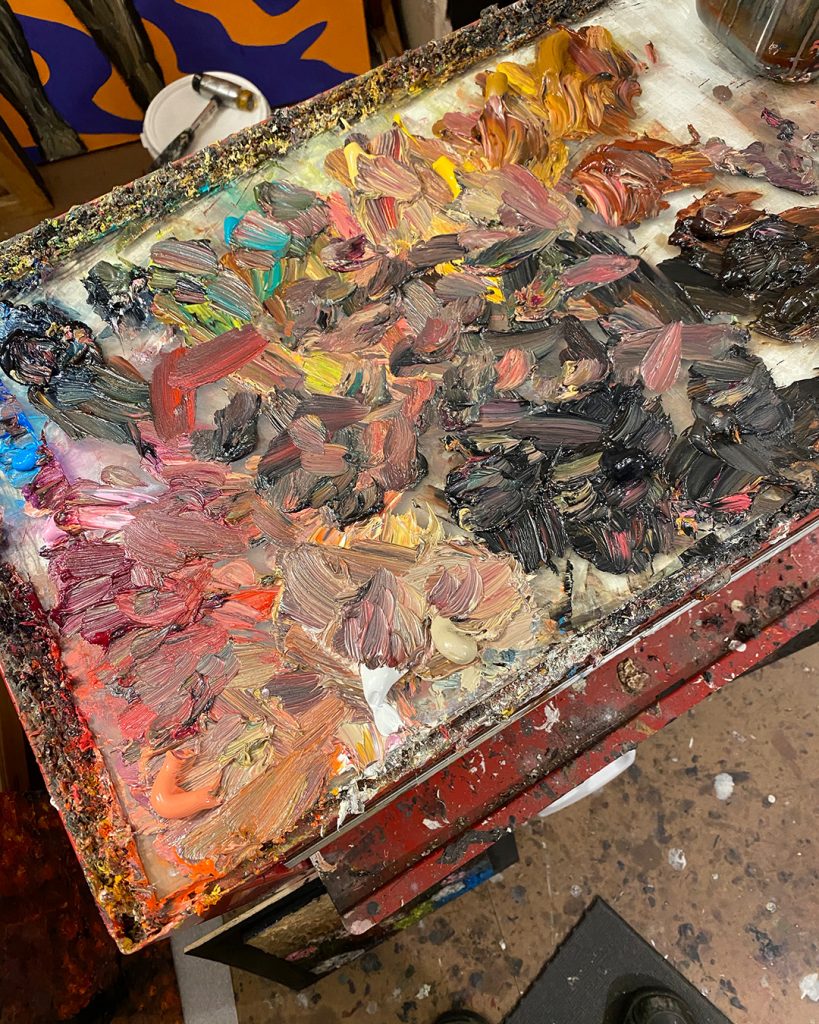Thick Paint Portraits
By Jean Cunningham
James Deeb is an oil painter. His subject matter is creative figurative pieces primarily with faces as the dominant element. One obvious aspect that makes his work unique is the massive amount of paint he uses on each piece. For instance, he weighed a new 12”x12” canvas and a finished 12”x12” painting. There was a six-ounce difference which is at least two entire tubes of oil paint. The thickness comes from the creative method he uses to create his images. Deeb says all artists have a “collection of idiosyncrasies” they have developed over time which helps to make their work unique.
Deeb and his wife, Linda Rivera, have turned nearly their entire four-bedroom home over to art. Each has a separate studio room, and another room is entirely for art storage. There is a printing press in the dining room. In his studio, there is an easel, a low tool chest repurposed as a palette and many in-process paintings. It is a little room, but Deeb says “It is organized for me. Others might see it as very tight and small.” He goes on to explain that it reduces the exhaustion of moving as he reaches for additional materials and works on different paintings. The room also has a large mirror and tables with art supplies and books for reference. The fumes from solvents used during oil painting is an issue for many oil painters, especially those with families who have home studios. Deeb has solved this problem by not using VOC-carrying solvents and using only a small amount of odorless solvent to treat his brushes. He also turns on an air filter when needed while using any sealers or resins.
Since Deeb also has a full-time job, most of his painting is done after work hours. During the pandemic, he was working at home which eliminated his commute time. As a result, he completed two art works a month, one of his most productive years ever. On weekends, he does most of his art-related maintenance such as building and prepping canvases, framing completed work, and developing marketing and promotional ideas.
Deeb currently has ten paintings at different stages of development, but on average there are only 6-8. Multiple paintings are necessary for him to stay busy because each layer of the thick paint takes 1-2 weeks to dry. The wait time also satisfies his desire to observe the “unresolved” works out of the “corner of my eye” while continuing to think about and evolve his vision for each piece.
He builds creative diaries with drawings and sketches which are also reference materials for future paintings. Deeb does not like to read books about artists, but instead reads almost entirely outside the field of art for inspiration. For example, he likes to read Scientific American to find unusual ideas. And recently he read a book, Fire: A Brief History, by Steven J. Pyne about the human relationship with fire as a technology, resulting in new paintings that featured fire.
He uses a huge amount of paint on each painting for two reasons. One as noted above, he uses paint straight out of the tube rather than mixing it with solvents. Two, his unique painting style demands it as described in detail below.
To start a new work, Deeb takes one of two paths. To pursue a “linear” path, he chooses an existing image from one of his sketch books and paints that image.
For an “improvisation” painting, he starts with a blank canvas and uses his non-dominant hand to add marks (e.g. lines, curves, etc.) of various colors to the canvas as an initial consideration of image positioning and color scheme. He then starts adding paint and smearing it around the canvas. “I am not an abstract artist.”, Deeb noted, so during this stage he watches for a shape or composition to “appear”. As he works, he adds more and more paint. He is always either adding to an image he is considering developing, or he is destroying a partial image he has decided against. He might blur the image or mark into the already thick layer of paint with the back of his brush. Ultimately as a figurative painter he says, “This all comes back to drawing.”
An observer viewing his process might find it difficult to see what is being changed at each layer, but Deeb feels it is important to continue revising until the fine details are just right. He said, “The position of the eyeball and the tilt of the head can have a major impact to what is seen.” Each layer will end up with a more defined color scheme and added texture. Once he is satisfied with the basic painting, he lets those layers completely dry. Then for the last layer, he adds very clear, saturated color to specific details that ensures the colors are pure. This is especially necessary when he uses yellows and whites. Each of the layers adds significant depth to the paint, which is the second reason he uses a lot of paint and has very thick finished paintings.
As Deeb works, he also digitally documents the various stages for use on social media. Also, he finds that the viewing the photographs along with looking at the piece in a mirror helps him identify what might be “off” in an image.
When he feels the painting is done, he paints the edges black, adds a hanging wire, affixes the title, his name, and a date, and then, takes the final photograph. To learn more about James Deeb visit his website at www.jamesdeeb.com to see finished work and his artist statement. Deeb also has an Evanston Made page. To see his finished and in process work, visit his Instagram page @james_deeb.
Jean Cunningham is retired after a career in business management and finance. She has written three books and authored many articles in her field, was a speaker at conferences, and taught at the university level. While traveling for business she began painting and drawing for relaxation and collecting art. She and her husband have lived in Evanston for 11 years and are avid walkers of the town and lakeside. She has a BS from Indiana University and an MBA from Northeastern University.






